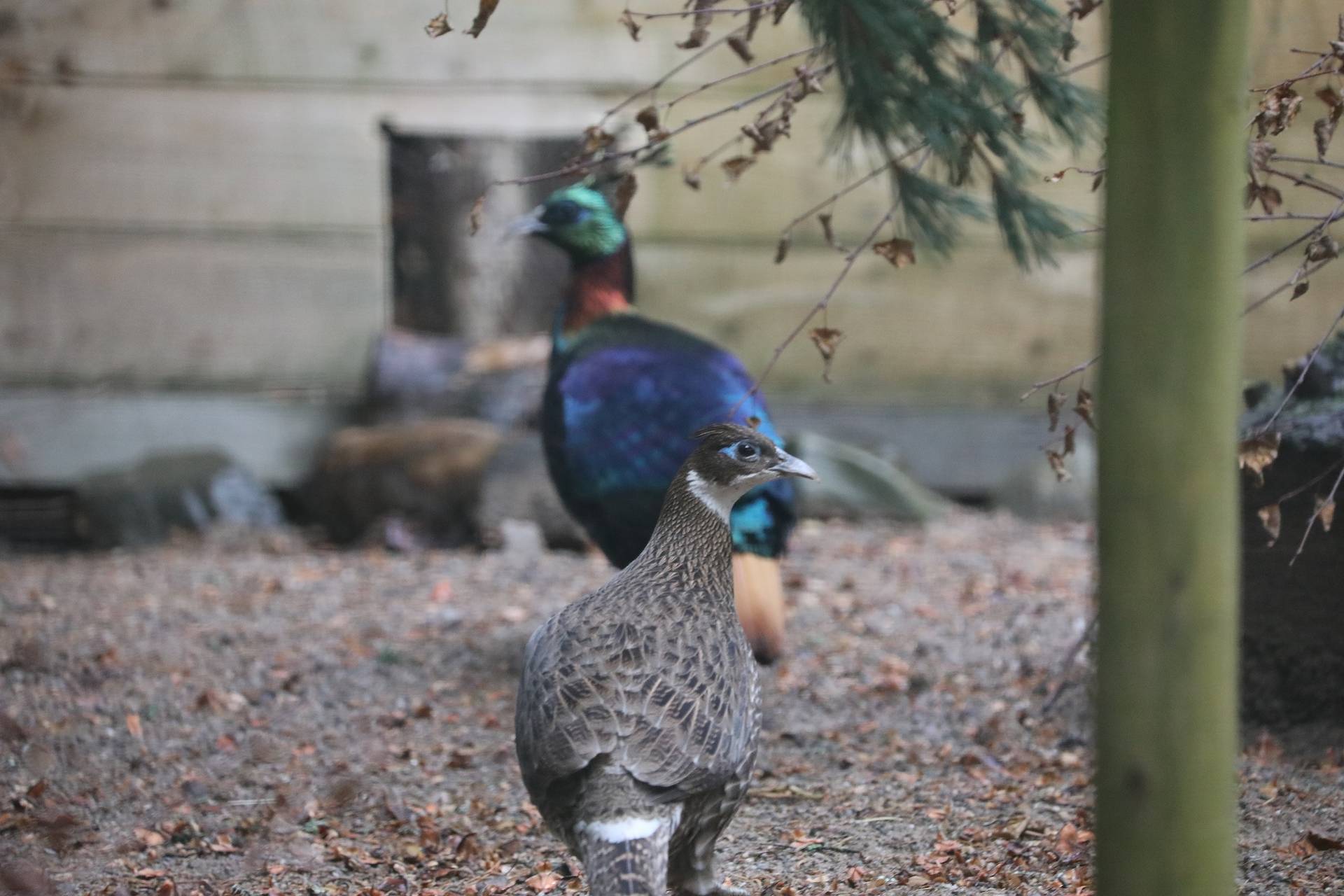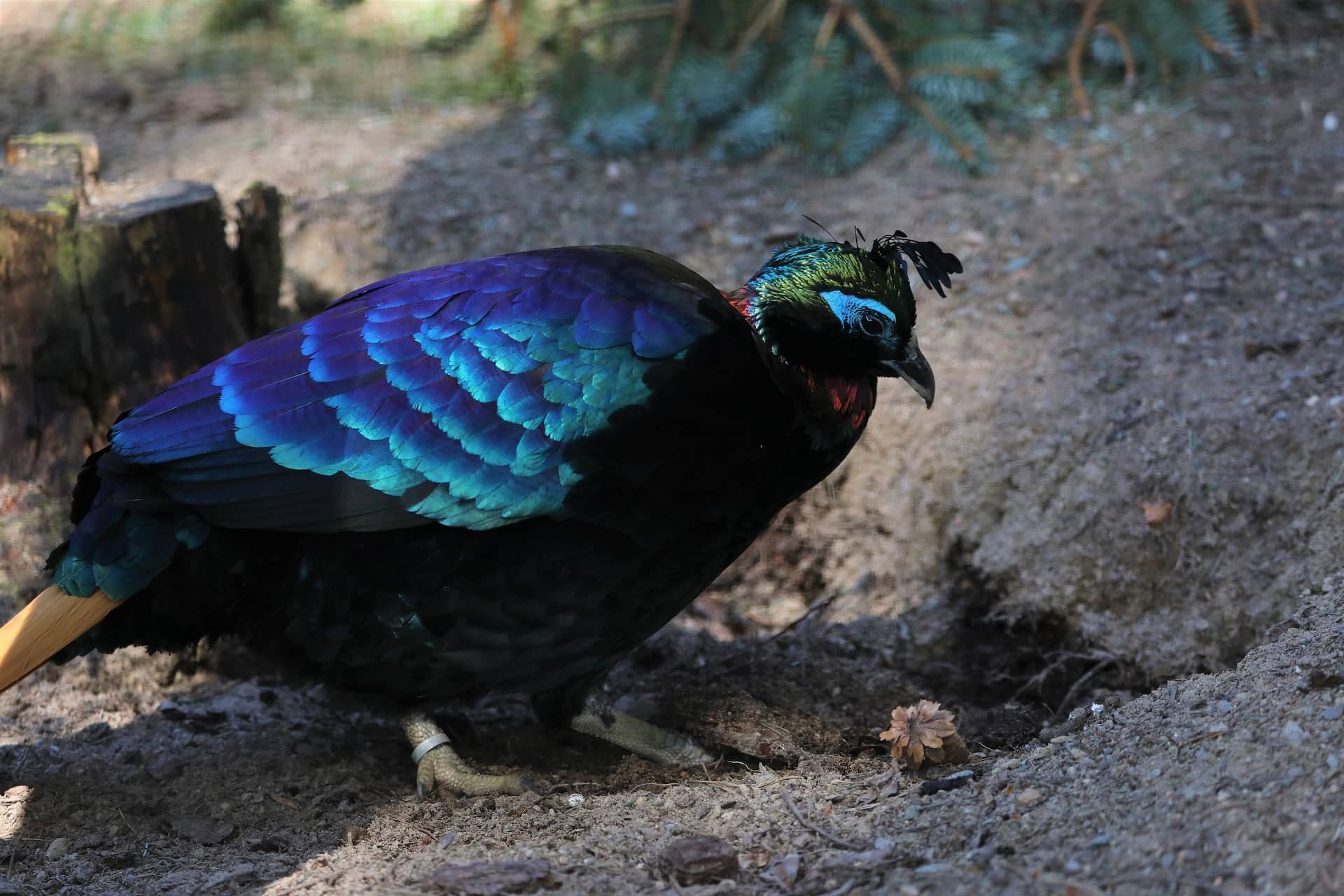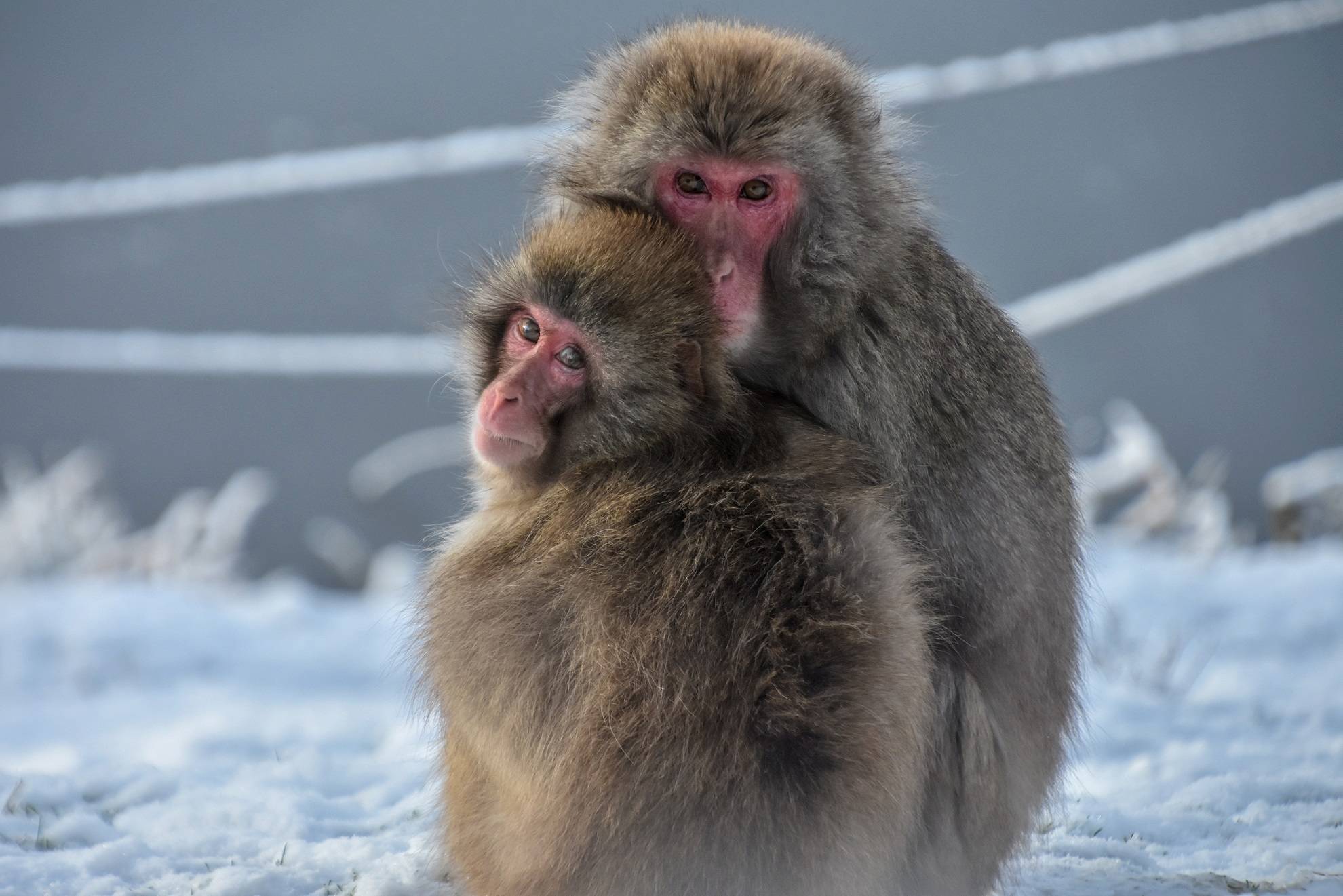Himalayan monal
Lophophorus impejanus

We are home to two Himalayan monals here at Highland Wildlife Park - a male and a female. They can be spotted in Wildcat Wood.
The Himalayan monal, the national bird of Nepal, is a striking and vibrant species native to the mountainous regions of the Himalayas. Its natural range stretches across eastern Afghanistan and throughout the Himalayas, extending into China, Pakistan, India, Bhutan, Nepal and Myanmar.
Like many other pheasant species, the male Himalayan monal boasts a spectacular and colourful plumage, featuring hues of blue, green, purple, red and orange. This vivid display is a characteristic trait designed to attract females. In contrast, the females have more muted tones, with plumage in shades of brown, black and white, which helps them blend into their environment, especially during nesting.
Population
Unknown
Diet
Insectivore
Habitat
Forest
Fact file
Himalayan monals live in alpine meadows and forested slopes, usually between 2,100 and 4,500 metres above sea level
Females have earthy brown, black, and white tones that help them stay hidden while nesting
Males perform elaborate displays, fanning out their feathers and calling to attract mates

How we're helping
Like all the animals in our care, our Himalayan monals are amazing ambassadors for their relatives in the wild and help hundreds of thousands of people connect with nature every year. They encourage visitors to learn about the threats facing wildlife and the action they can take to help create a world where nature is protected, valued, and loved.
As a wildlife conservation charity, we care for the animals here at the park and work to protect species at risk around the world. From providing expertise in genetics and veterinary health to protecting wild places with local conservation partners, and even restoring threatened species to the wild, we are active where we are needed most.
Find out more about RZSS conservation
